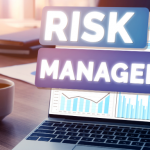Executive Summary
-
Climate risk assessment tools are integral to crafting effective ESG strategies.
-
Key tools like X, Y, and Z are leading the industry with innovative features.
-
Understanding these tools can enhance risk management and investment returns.
-
Growing regulatory pressure makes climate risk assessment indispensable for companies.
Introduction
In the face of mounting environmental challenges, businesses are increasingly turning to ESG (Environmental, Social, and Governance) strategies to ensure sustainability and resilience. Climate risk assessment tools play a pivotal role in these strategies by providing insights into potential environmental risks and helping companies mitigate them. This article delves into the top climate risk assessment tools of 2025, offering investors, corporates, and founders the information needed to make informed decisions in an era where sustainability is paramount.
Definitions / Context
Climate Risk Assessment Tools
Technologies and methodologies used to evaluate the potential impact of climate-related risks on business operations and investments. These tools aid in identifying vulnerabilities and predicting future risks, enabling companies to proactively manage environmental challenges.
Benefits / Pros
-
Enhanced Risk Management
Tools like X and Y enable companies to foresee potential environmental threats and prepare accordingly. -
Regulatory Compliance
As governments enforce stricter climate-related regulations, these tools help businesses align with legal requirements. -
Investor Confidence
Demonstrating a commitment to climate risk assessment can attract environmentally conscious investors.
Risks / Cons / Challenges
-
Cost
High initial investment for comprehensive tools can be a barrier for small to medium enterprises. -
Complexity
Implementing these tools requires expertise, which might necessitate additional training or hiring. -
Data Reliability
The effectiveness of these tools hinges on the quality of data, which can sometimes be inconsistent or incomplete.
Step-by-Step Process
How to Integrate a Climate Risk Assessment Tool
-
Identify Needs
Determine the specific climate risks relevant to your business. -
Select a Tool
Choose a tool that aligns with your business objectives and budget. -
Data Collection
Gather relevant climate data and historical records. -
Implementation
Integrate the tool into your existing systems and processes. -
Review and Adjust
Regularly assess the tool’s effectiveness and make necessary adjustments.
A multinational corporation in the energy sector implemented tool Z to assess the impact of rising sea levels on their coastal facilities. By leveraging predictive analytics, the company was able to redesign infrastructure and enhance disaster preparedness, resulting in a 30% reduction in potential risk exposure.
Case Study: Multinational Energy Corporation
Expert Tips / Strategic Insights
-
Stay Updated
Regularly update your tools to incorporate the latest climate data and predictive models. -
Holistic Approach
Combine climate risk assessment with broader ESG strategies for comprehensive sustainability planning. -
Consult Experts
Work with ESG consultants to maximize the efficacy of your chosen tools.
Tools / Resources / Calculators
-
Tool X
Offers a free demo and comprehensive user guides. -
Resource Y
Provides an extensive checklist for climate risk assessment readiness. -
Calculator Z
Helps estimate potential cost savings from effective risk management.
Conclusion
As the world continues to grapple with climate change, the importance of climate risk assessment tools in shaping robust ESG strategies cannot be overstated. By integrating these tools, businesses can not only comply with regulations but also enhance investor trust and long-term sustainability. To explore tailored ESG solutions, consider reaching out to industry experts.























